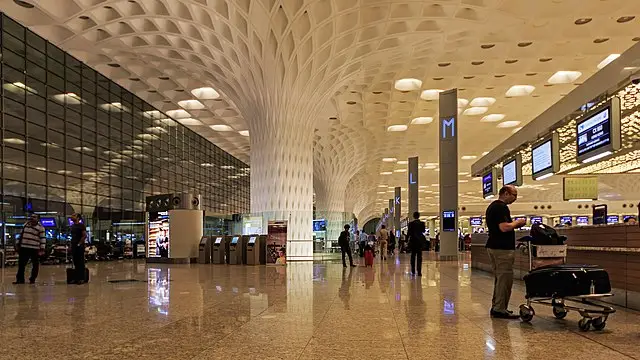India Airport Sector Transformation: Rs 1 Lakh Crore Investment to Reshape Infrastructure
India’s airport sector is about to undergo a massive transformation. Over the next four to five years, the country will see an investment of more than ₹1 lakh crore in airport infrastructure, according to credit rating agency ICRA. This surge in capital expenditure aims to resolve capacity constraints at key airports and meet the rising demand for air travel through the development of both Greenfield and Brownfield airport projects.

Greenfield and Brownfield Projects Fuel India Airport Sector Transformation
The ICRA report shows a clear strategy: resolve congestion and improve connectivity. Airports in major cities like Delhi, Mumbai, and Bengaluru are already operating close to full capacity. To meet growing traffic, India plans to build new airports and expand existing ones.
The key Greenfield projects include airports in Jewar (Noida), Navi Mumbai, Bhogapuram (Andhra Pradesh), and Parandur (Chennai). These new airports will handle future demand and relieve pressure from existing hubs.
On the Brownfield side, airports in Bengaluru, Hyderabad, Cochin, Mumbai, and Nagpur are undergoing major upgrades. Several Airports Authority of India (AAI) facilities will also be enhanced to improve overall passenger experience and increase capacity.
Passenger Growth Driving India’s Airport Infrastructure Expansion
Rising passenger numbers are a major force behind the India airport sector transformation. ICRA projects passenger traffic to grow by 7–9% annually, reaching 440–450 million by FY2026. For FY2025, the estimate stands at 412–415 million, marking a 10% year-on-year rise.
Domestic air travel is surging, thanks to increased connectivity to Tier-II cities and improved access to tourist spots. At the same time, international travel saw 11% growth in FY2025, driven by more direct routes and an expanding middle class eager to explore global destinations.
India’s growing aviation footprint highlights its role as an emerging global travel hub.
Financial Strength Supports Ongoing Airport Sector Investments
Despite the scale of investment, the airport sector’s financial health remains sound. ICRA projects an interest coverage ratio above 5 times and a debt service coverage ratio (DSCR) exceeding 3.5 times in FY2026. These figures show the sector’s ability to manage its debts and remain profitable while expanding.
High coverage ratios suggest that airports can continue to invest in infrastructure without risking financial instability. Strong financial performance will also attract further investment from both public and private sectors.
Airport Revenue Set to Soar with Passenger Growth
As passenger traffic climbs, airport revenues are expected to grow by 18–20% year-on-year in FY2026, according to ICRA. This revenue will come from various sources: passenger fees, cargo handling, commercial operations, and newer value-added services introduced as part of expansion.
Increased revenue plays a crucial role in repaying infrastructure loans and supporting future development plans. It also strengthens India’s overall economy by promoting tourism, trade, and employment.
Conclusion: India Airport Sector Transformation Taking Off
India’s airport sector stands at the edge of a major transformation. Backed by over ₹1 lakh crore in investments, the industry is preparing to expand its capacity, improve passenger experience, and support economic growth.
With strategic investments in Greenfield and Brownfield projects, a booming travel demand, and a stable financial outlook, India’s airport network is well-positioned to become one of the world’s best. As the sector evolves, it promises to connect more cities, create more jobs, and contribute significantly to the country’s future.






